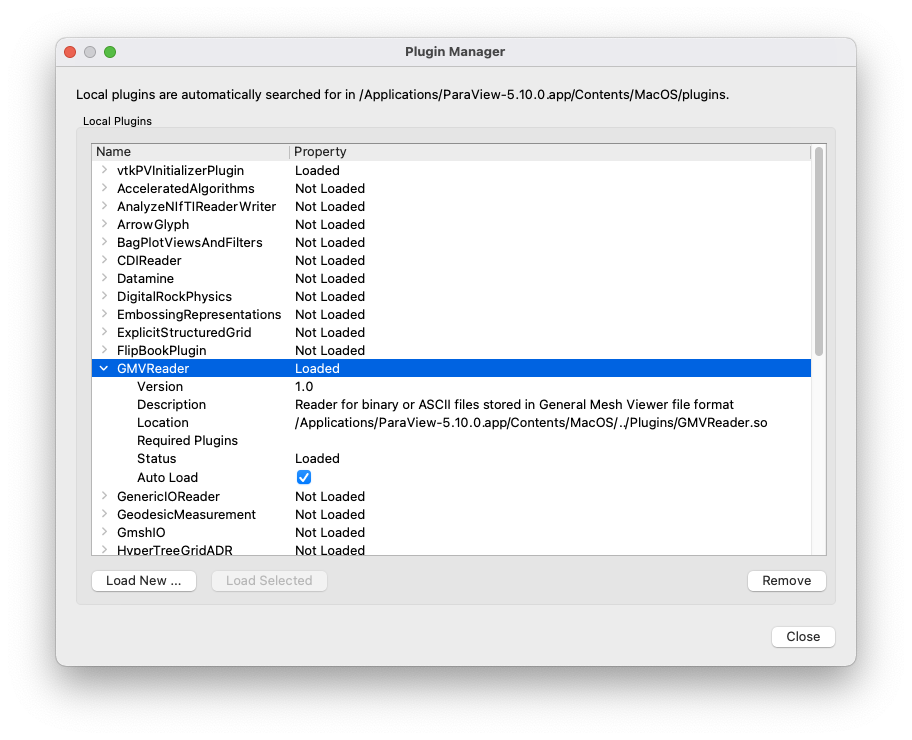42. Radiation Enclosure Tools
42.1. Introduction
Truchas includes several tools for working with radiation enclosure datasets.
genre: Used to compute view factors and generate radiation enclosure files.vizre: Used to generate visualization files for a given enclosure.cmpre: Used to compare two radiation enclosure files.
42.2. Invoking GENRE
Genre generates a radiation enclosure dataset.
- Serial:
genre [-f] input_file encl_file- Parallel:
mpirun -np N genre [-f] input_file encl_file
encl_file is the name of the output view factor radiation enclosure file to
be written. If a file with this name already exists, it will not be overwritten
unless the -f flag is provided. The input file is a Fortran namelist
file containing the following namelists:
Note
The order of the namelists does not matter, and there may be other stuff in the input file; behavior is similar to Truchas input files.
There must be a single ENCLOSURE namelist, at most one CHAPARRAL namelist, and at most one PATCHES namelist. If there is a CHAPARRAL namelist, the specified enclosure surface is generated and written to the enclosure file along with the calculated view factors. If there is no CHAPARRAL namelist, just the enclosure surface is written; this is useful for examining the surface for correctness prior to performing the expensive view factor calculation.
Tip
See the General Guidance section for help setting namelist parameters.
Tip
Namelists may be easily disabled by placing a character before the &. For
example, the following namelist is ignored by Genre due to the leading x:
x&PATCHES
metis_face_patch_ratio = 4
/
42.3. Invoking VIZRE
Writes a GMV-format visualization file for the specified enclosure. If the enclosure includes view factor data, the ambient view factor and view factor matrix row sums are written as face variables.
- Serial:
vizre [options] enclosure_file gmv_file- Parallel:
mpirun -np N vizre [options] enclosure_file gmv_file(only useful if the matrix is too large to be held on a single process.)
Vizre Command Line Options:
- -r list
Write the specified rows of the view factor matrix as face variables. List is a comma-separated list of ranges; a range is index, first:last, or first:last:stride.
- -c list
Write the specified columns of the view factor matrix as face variables. List is a comma-separated list of ranges; a range is index, first:last, or first:last:stride.
- -s
Write the fully-developed enclosure surface defined by the enclosure’s symmetries. The default is to write just the generating surface.
- -h, --help
Display this help and exit.
Note
Only surface faces are written.
Paraview can optionally cull backfaces (Search “backface” in Properties, change “Backface Representation” to “Cull Backface”).
Surface side set info is written as a scalar field named “material id”.
When using the
-soption, info about the copies of the generating surface are written as scalar fields, named with the prefix “flag”.May need a parallel version simply because the VF matrix is too large to be held on a single process.
Viewing VIZRE’s GMV Output
Paraview can be used to view the GMV output file produced by VIZRE. However, it is necessary to enable a plugin following these steps:
After installing and starting Paraview, navigate to Tools -> Manage Plugins…
Double-click the GMVReader option, and enable the Auto Load check mark.
Click the Load Selected button while selecting GMVReader.

42.4. Invoking CMPRE
If you’ve generated multiple datasets for the same enclosure using different sets of Chaparral parameters, it is useful to compare the calculated view factor matrices. You can do this with cmpre:
- Serial:
cmpre encl_file1 encl_file2- Parallel:
mpirun -np N cmpre encl_file1 encl_file2(only useful if the matrix is too large to be held on a single process.)
The program simply prints out several VF operator norms of the difference of the two view factor matrices to the screen. It also prints the largest single difference in matrix and its row and column location. Naturally both files must contain VF data, and the enclosure surfaces must be the same.